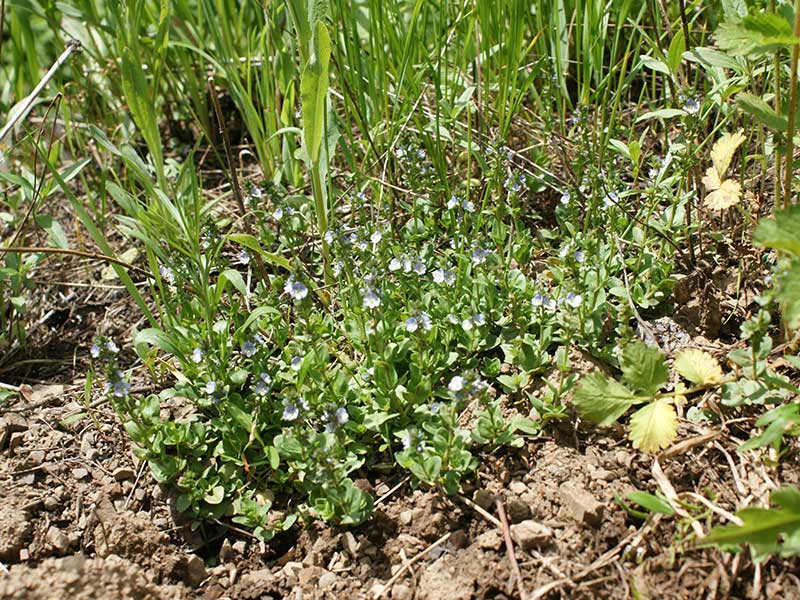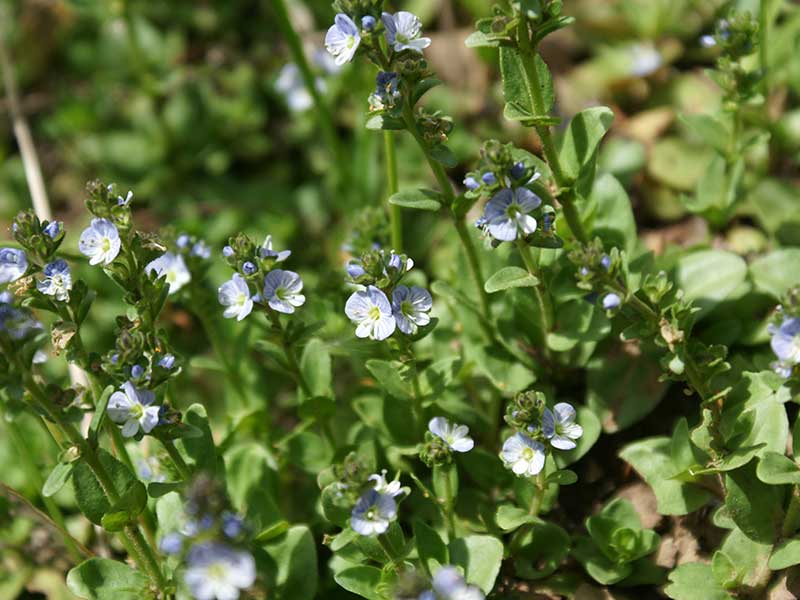Veronica americana / American brooklime
- teeny, 4-petaled blue or violet-ish flowers, white centers
- in small clumps on stream banks and in other very wet areas
- may be found as a single plant or as a large and dense population – clonal
Also known as: American speedwell
The American brooklime or speedwell is a water lover; it likes to “have its feet wet.” As a result, you will find it on the muddy banks of running streams and other riparian zones, in shallow water, on the edges of lakes and springs, and in seeps. It is often associated with watercress, skullcap or monkey flower. All three of these are pretty cute, and finding them all in one place – one stream within a couple yards of each other – is a pretty good treat.
The flowers themselves are very teeny, about 1/4″ across. They have four petals fused at the base into a shallow, flattened saucer. The top petal is fairly large, like a forehead. Two side petals can be imagined as cheeks, and a significantly smaller and narrower lower petal is a “chin”… i.e. overall, if you are otherwise bored but liking to sit on the side of a stream, it looks like a face. I’m not the one who made this up.
The flowers are borne in branching racemes or spikes in the axils of the upper stem leaves… meaning that when you see one flower, you’ll most likely see a bunch. In the Valley, they are open primarily in July and August.
American brooklime spreads mostly by shallow creeping rhizomes and by rooting from trailing stems. The plants themselves can form rather dense mats. If you get close enough to look at the leaves as well as the flowers, they are oval (wider near the bases), pointed at the tips, and opposite. A single stem will have 3-5 pairs.
| Color | |
|---|---|
| Family | |
| Blossom size | |
| Inflorescence size | |
| Inflorescence type | |
| When? | |
| Where? |




